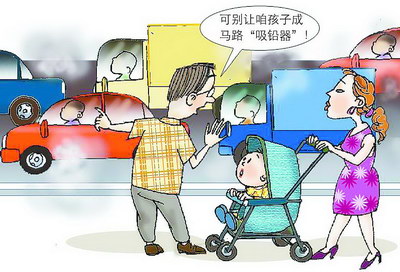Rather than restate every one, scientists decided to keep the inaccurate constant. "Thus," Tim Flannery notes, "every raw radiocarbon date you read today is given as too young by around 3 percent." The problems didn't quite stop there. It was also quickly discovered that carbon-14 samples can be easily contaminated with carbon from other sources—a tiny scrap of vegetable matter, for instance, that has been collected with the sample and not noticed.
科学家们没有修正每个计算结果,而是决定保留这个不准确的常数。“这样,”提姆·弗兰纳里说,“你只要把今天见到的每一个以放射性碳年代测定法测定的年代减去大约3%。”问题没有完全解决。人们又很快发现,碳-14的样品很容易被别处的碳污染──比如,一小点儿连同样品一起被采集来的而又没有被注意到的植物。

For younger samples— those under twenty thousand years or so—slight contamination does not always matter so much, but for older samples it can be a serious problem because so few remaining atoms are being counted. In the first instance, to borrow from Flannery, it is like miscounting by a dollar when counting to a thousand; in the second it is more like miscounting by a dollar when you have only two dollars to count.
对于年代不大久远的样品来说──年代小于大约2万年的样品──稍有污染并不总是关系很大,而对于年代比较久远的样品来说,这有可能是个严重的问题,因为统计中的剩余原子数实在太少了。借用弗兰纲纳里的话来说,在第一种情况下,就像是1000美元里少数1美元;而在第二种情况下,就像是仅有的2美元里少数了1美元。
Libby's method was also based on the assumption that the amount of carbon-14 in the atmosphere, and the rate at which it has been absorbed by living things, has been consistent throughout history. In fact it hasn't been. We now know that the volume of atmospheric carbon-14 varies depending on how well or not Earth's magnetism is deflecting cosmic rays, and that that can vary significantly over time. This means that some carbon-14 dates are more dubious than others. This is particularly so with dates just around the time that people first came to the Americas, which is one of the reasons the matter is so perennially in dispute.
而且,利比的方法是以如下假设为基础的,即大气里碳-14的含量以及生物吸收这种物质的速度,在整个历史进程中是始终不变的。事实并非如此。我们现在知道,大气里碳-14的数量变化不定,取决于地球的磁场能否有效地改变宇宙射线的方向;在漫长的时间里,变化的幅度可能很大。这意味着,有些以碳-14年代测定法测定的年代要比别的这类年代更无把握。在比较缺少把握的年代当中,有人类首次抵达美洲前后这一段时期的年代。这就是为什么那个问题老是争论不休的原因之一。
来源:可可英语 //m.moreplr.com/Article/201703/495836.shtml












